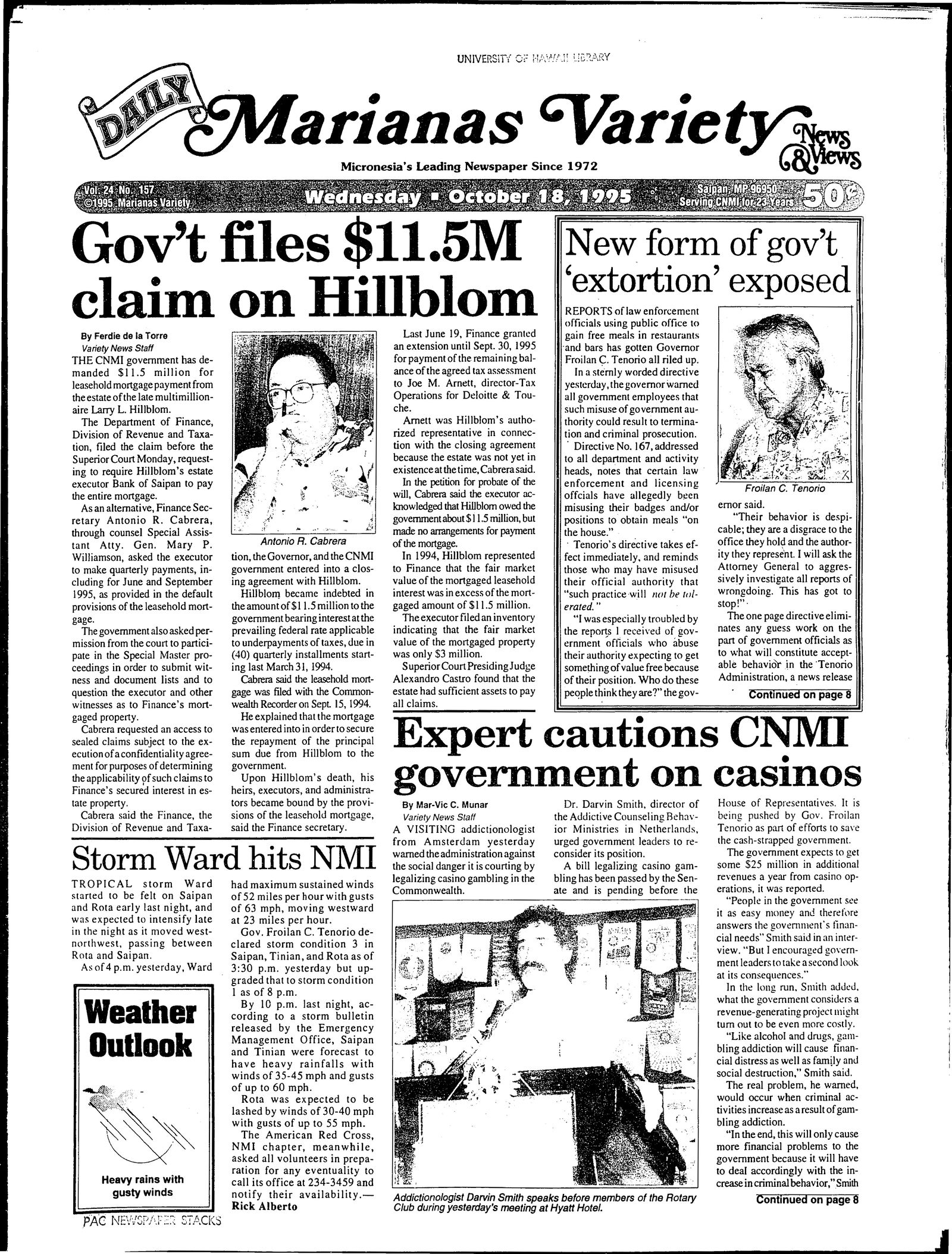
I was working for TODAY newspaper in Manila when I got a call from Abed Younis in 1995. He was recruiting reporters to work for Marianas Variety.
“Saipan is a nice place,” he said.
I imagined paradise, where you bask under the sun, sipping a cocktail with a tiny umbrella adorning your glass. It was irresistible.
I spent the earlier years of my career in journalism covering hard news — courts and cops, politics, bombings and all. I guess I could take a respite from city life. I’d work in the tiny paradise and then come back to my “real life,” I thought to myself. So I packed up my bag and boarded the plane bound for paradise. Little did I know that island life was in my future and a big chunk of my career in journalism would be with Marianas Variety.
Saipan was what I imagined it to be, but not as uneventful as I thought. I came in the summer of 1995 at the height of the controversy involving the garment industry and the Hillblom probate — dubbed “The Trial of the Century,” which were the staple of local news that caught national attention.

October 18, 1995

January 26, 1996
It turned out the Northern Marianas was also a paradise for journalists who were born to chase the lead and tell stories — about local politicians telling the feds to stay the hell out of local affairs; about self-important lawyers arguing in court about where Hillblom’s wealth should go; about some garment workers moonlighting as “ladies of the night” in Garapan.
One had to be thick-skinned to confront the inherent hazards of the trade such as the occasional harassment, furious phone calls, libel suits and threats of deportation (in retribution for stories that might have displeased some people in power). We managed to survive.
But a reporter ought not to lose her tender side to appreciate the joy of an educator who was named Teacher of the Year, or to recognize the pride of a mother whose child had accomplished an incredible feat at the science fair, or simply to cherish the charm of flame trees arching over Beach Road.
My day started camping out with other reporters on the grounds of Capital Hill, where we waited to get an “ambush” interview with then governor Froilan C. Tenorio, whose candor always guaranteed a great copy for the next day’s headline. He was not coy about flip-flopping on some issues. You might scratch your head but he claimed to be entitled to his whim. “I have the right to change my mind,” was one of his most memorable quotes.
Before the deadline, we bantered in the newsroom, discussing our stories and exchanging behind-the-scene anecdotes from the field. It was a great pleasure working with my editor Raffy Arroyo and my fellow reporters, Zaldy Dandan, Jojo Dass, Ferdie de la Torre and Rick Alberto. We were an irreverent lot. We were later joined by Tony Celis, Rene Acosta, Aldwin, Fajardo, Haidee Eugenio and Louis Alonso.
<p class=”p1″><em>Saipan was what I imagined it to be, but not as uneventful as I thought. I came in the summer of 1995 at the height of the controversy involving the garment industry and the Hillblom probate — dubbed “The Trial of the Century,” which were the staple of local news that caught national attention.</em>
It was a typical newsroom filled with cigarette smoke — back in the day indoor smoking was normal like in old movies — that fused with the aroma of freshly brewed coffee amid the adrenaline rush to beat the deadline.
In the adjacent room, there was Tita Lit’s makeshift kitchen, where we ordered instant noodles with shredded fried Spam to tide us over as we pounded on our computer keys.
Between deadlines, Mr. Younis would walk into the newsroom to share with us his pencil-written notes for news tips from his social meetings. Working for him was inspiring. He was fearless, driven by his passion to seek the truth and hold errant officials accountable for their bad decisions.
Reporting could be maddening, exhausting and humbling, and at the same time, rewarding and fascinating. It had been a great privilege to chronicle the history of the Northern Marianas.
I have since moved to Guam, where I worked at Marianas Variety-Guam edition for 12 years until I started my own publication, the Pacific Island Times.
Every now and then, I would run into people from Saipan — friends and acquaintances I used to hang out with and public officials I used to cover — who come to Guam for a visit. Every encounter sends me down the memory lane. It feels like home.











